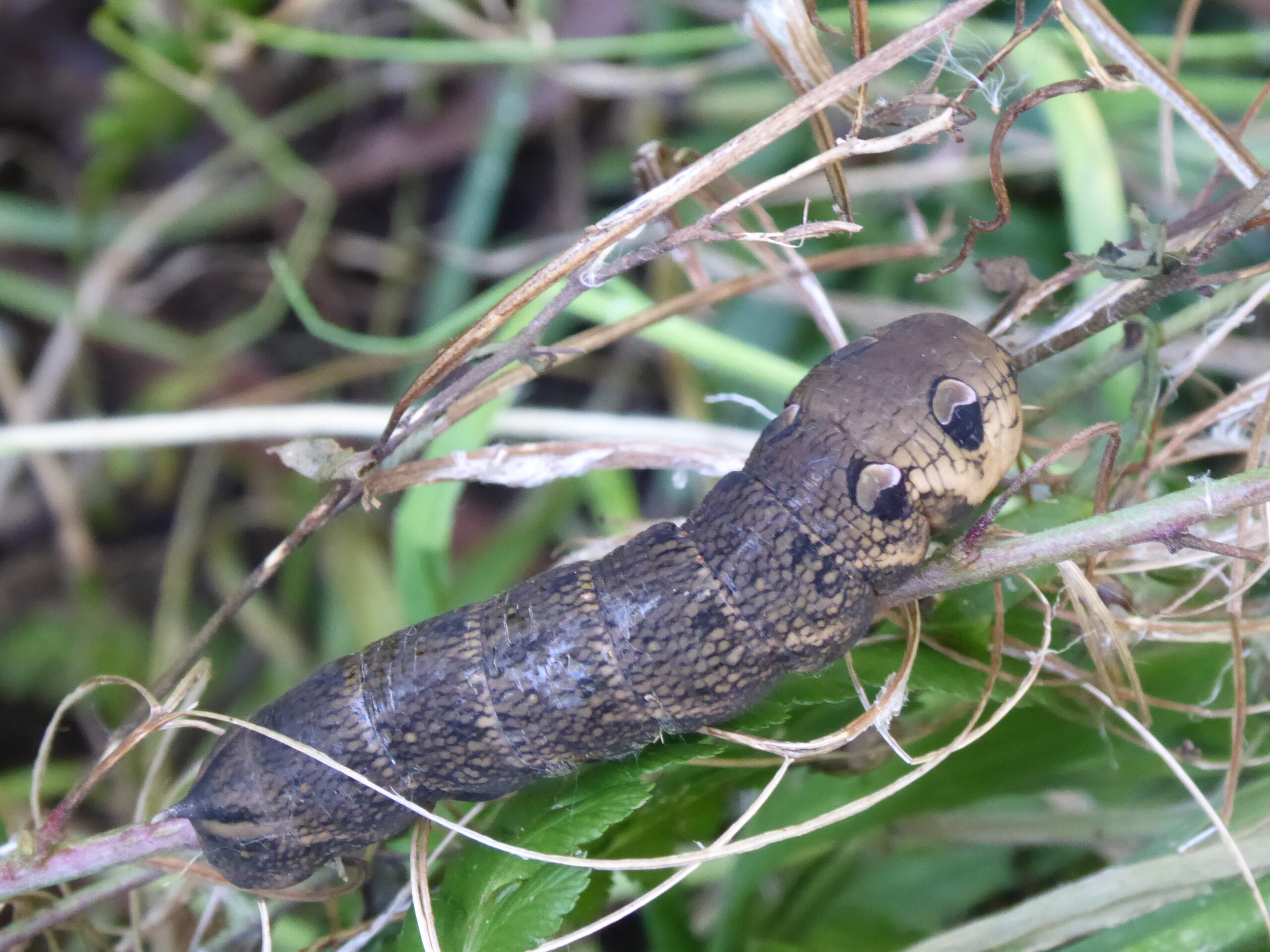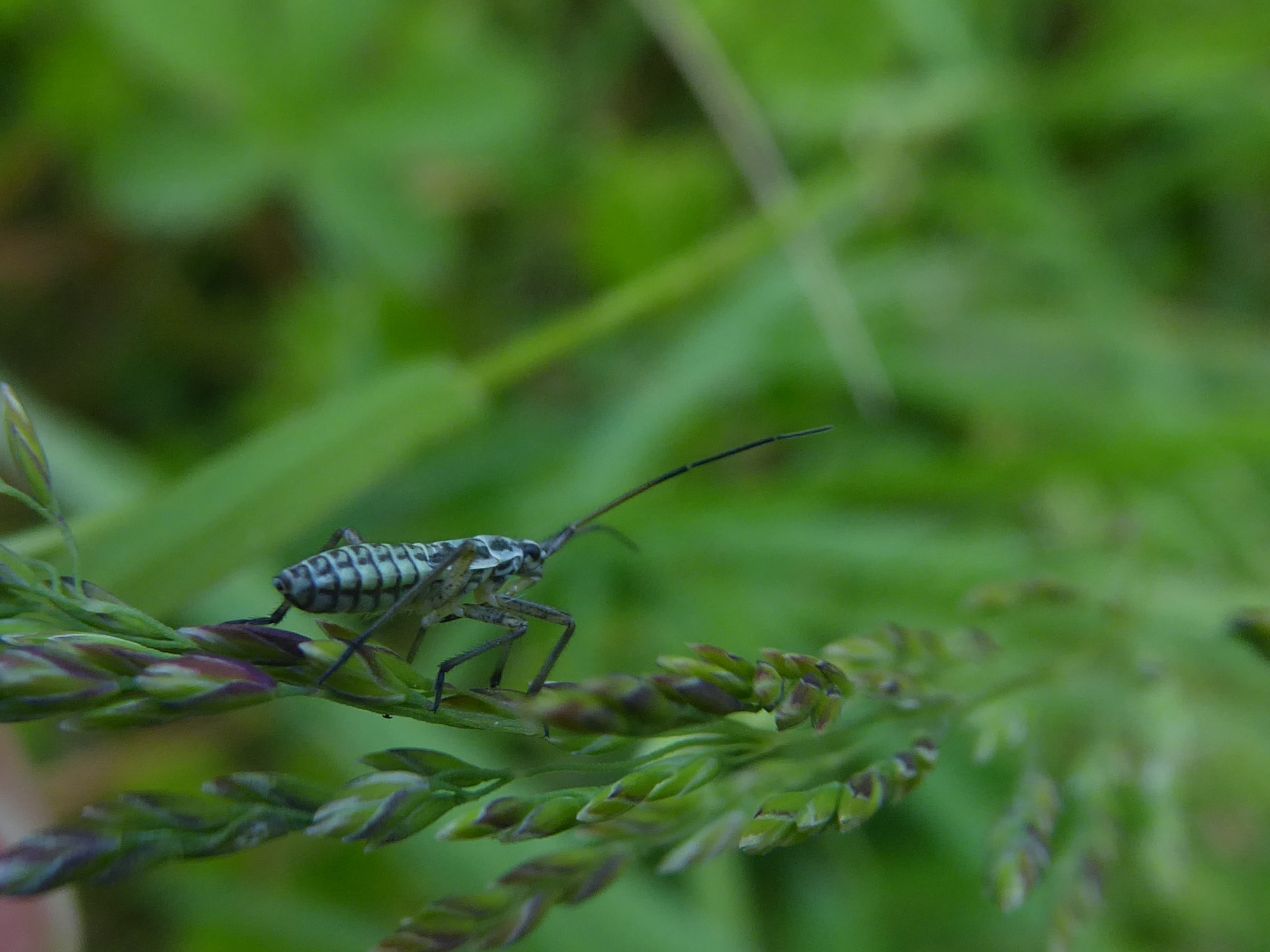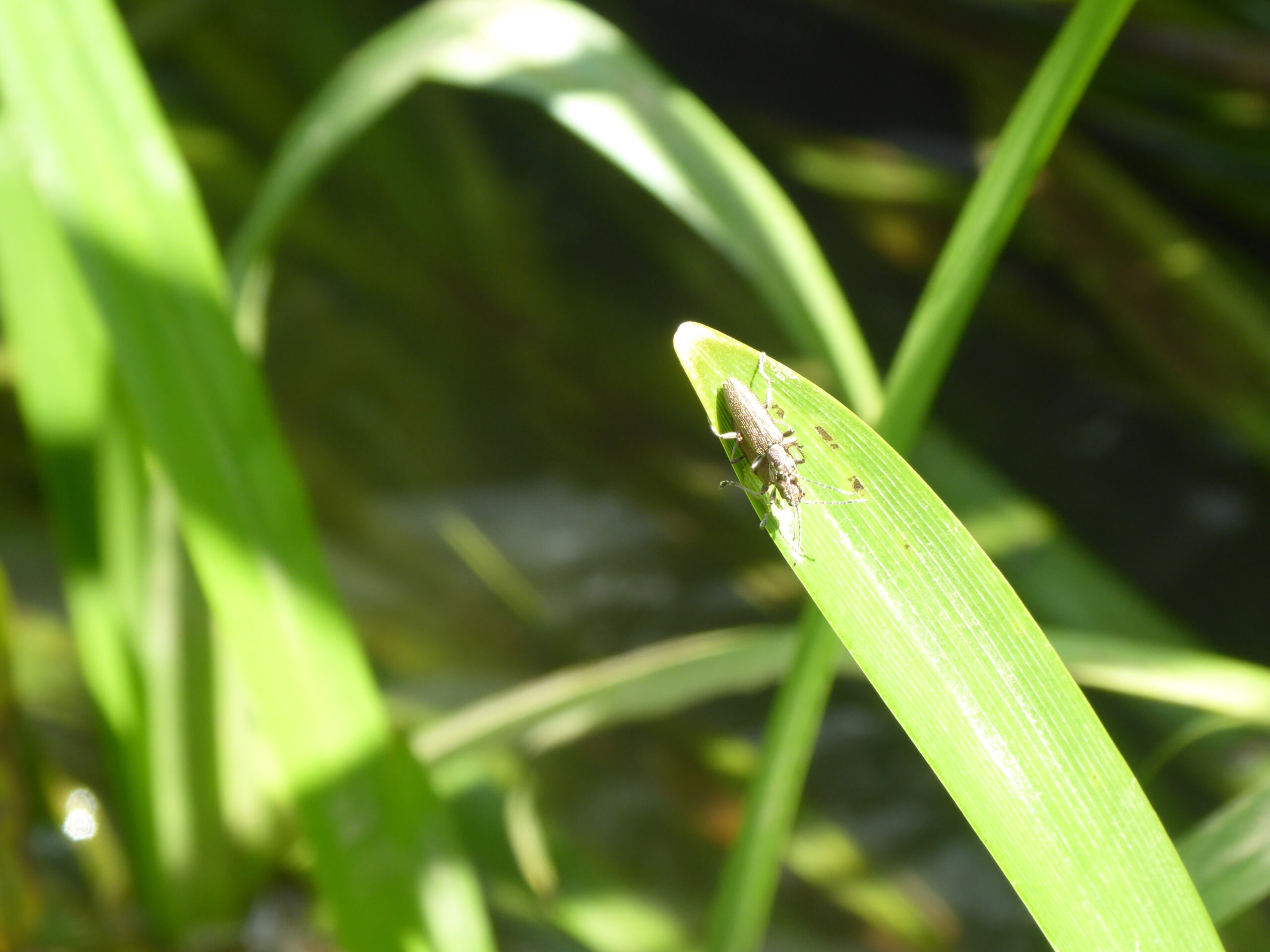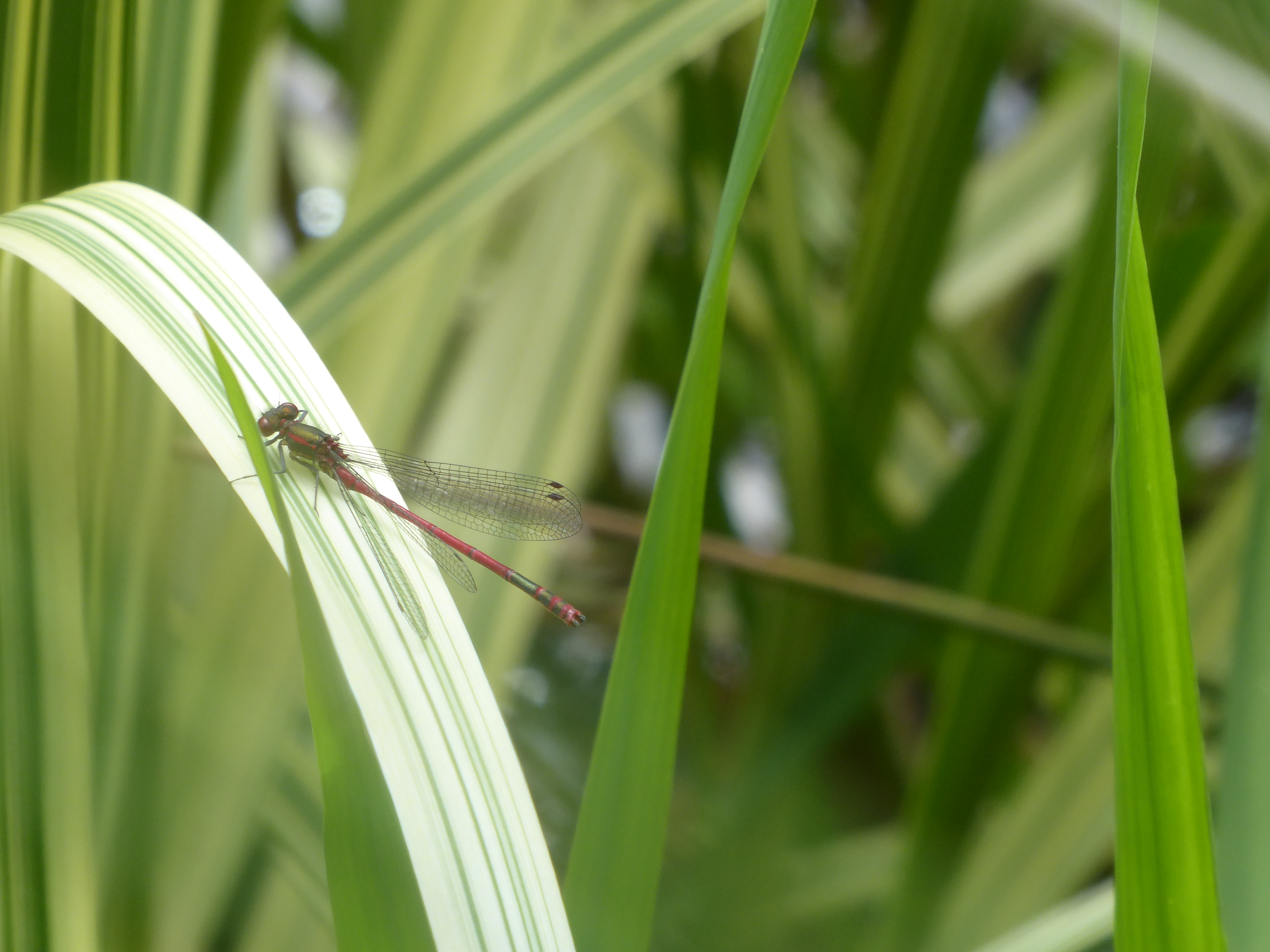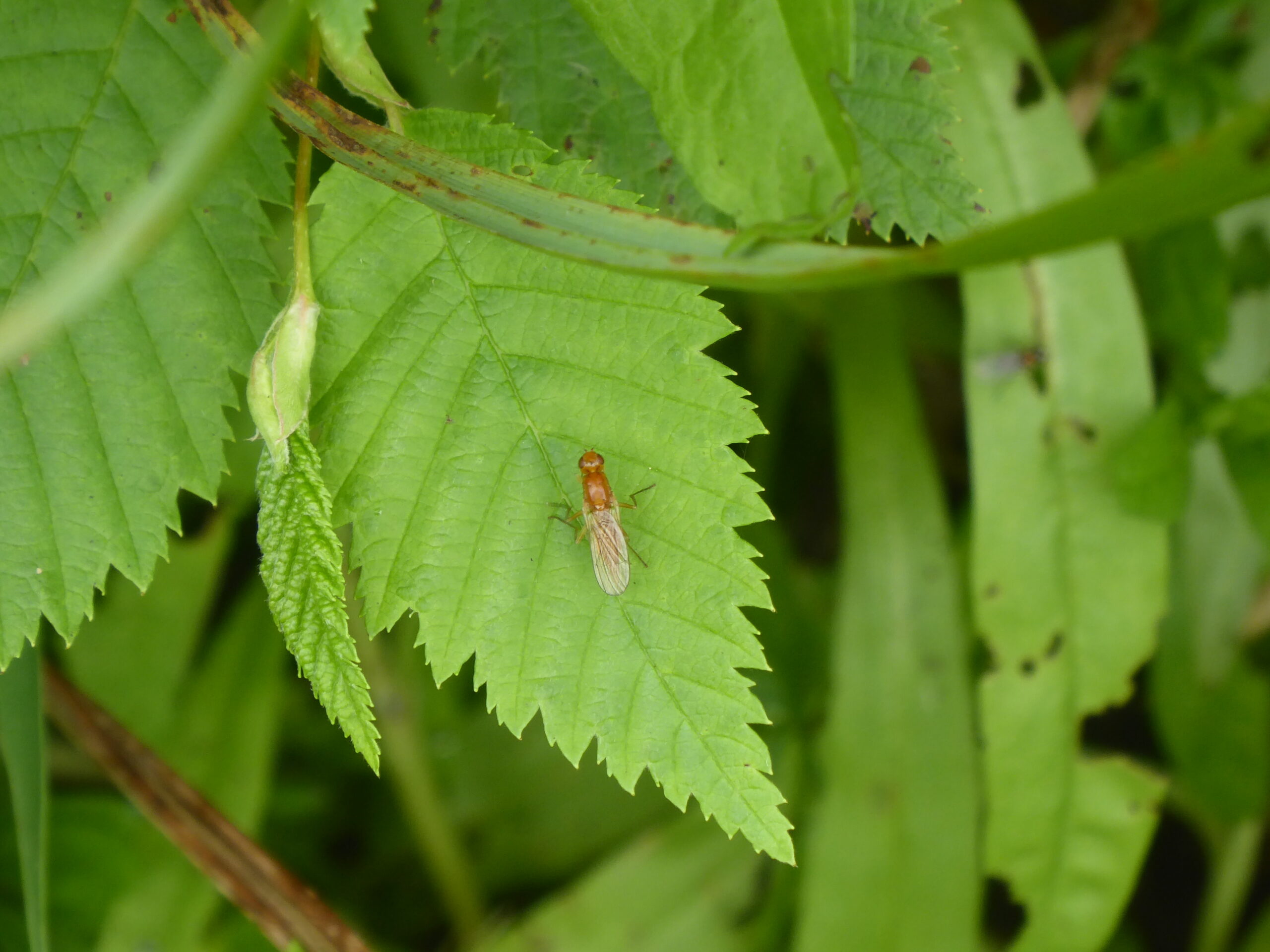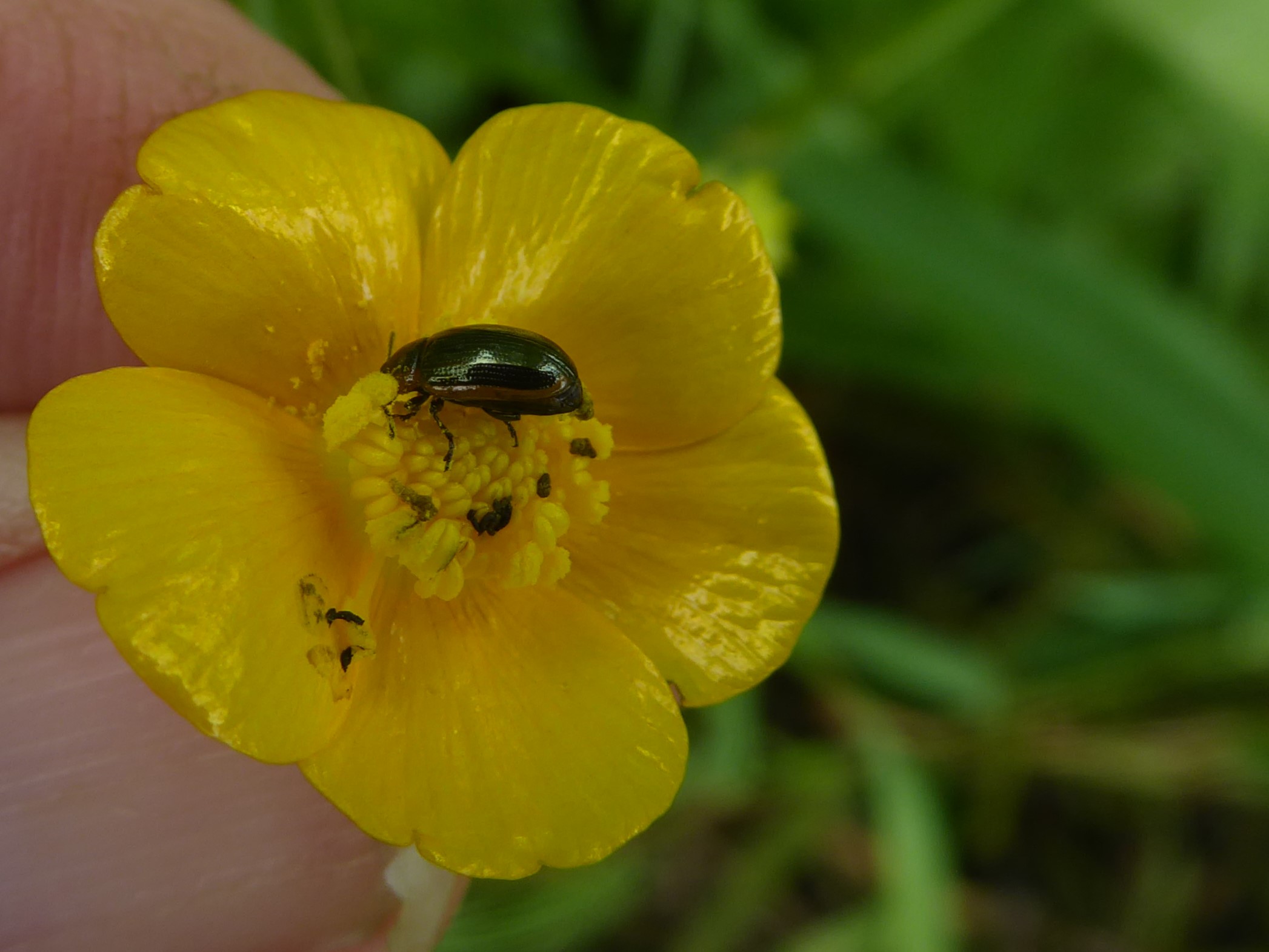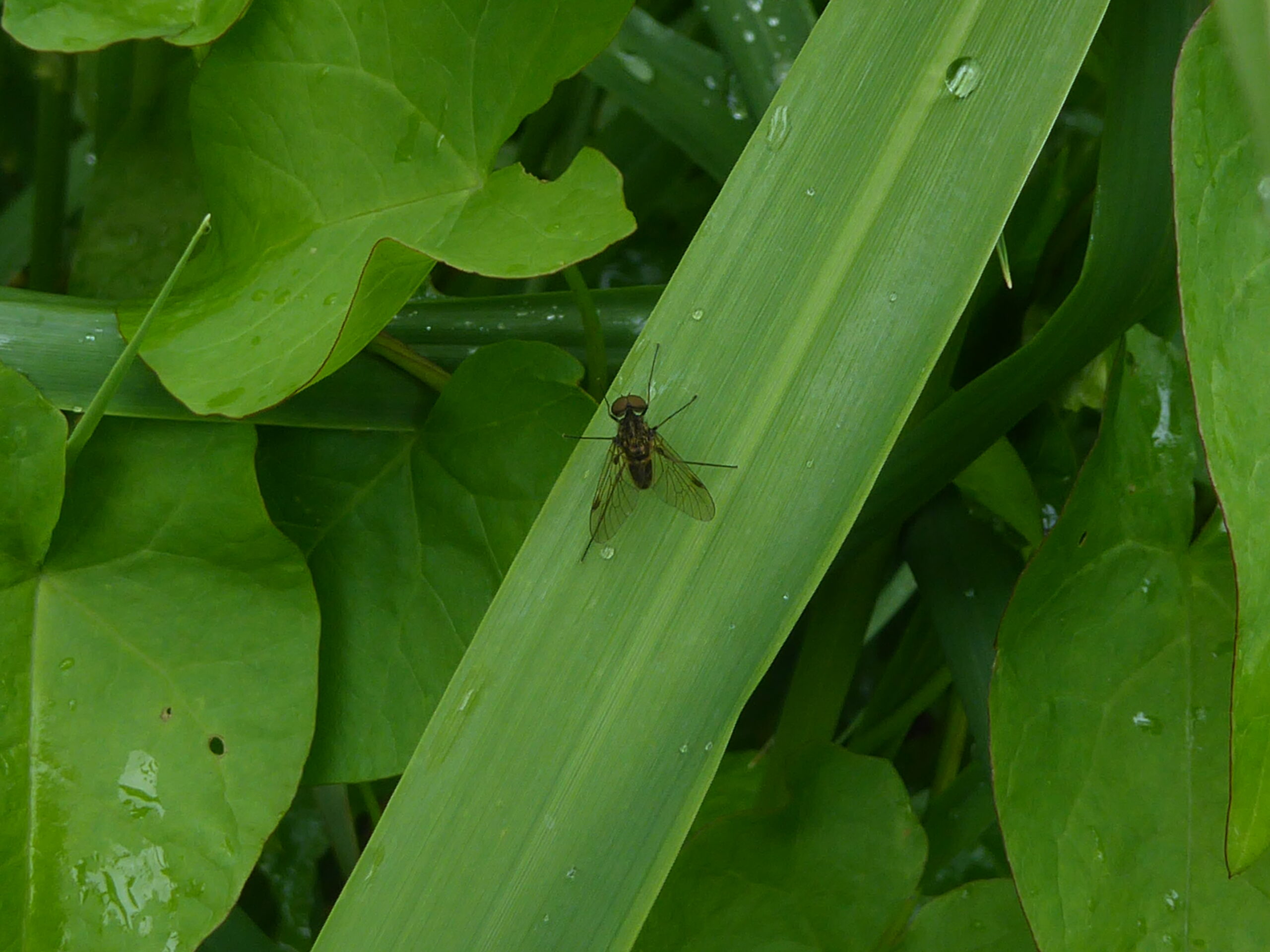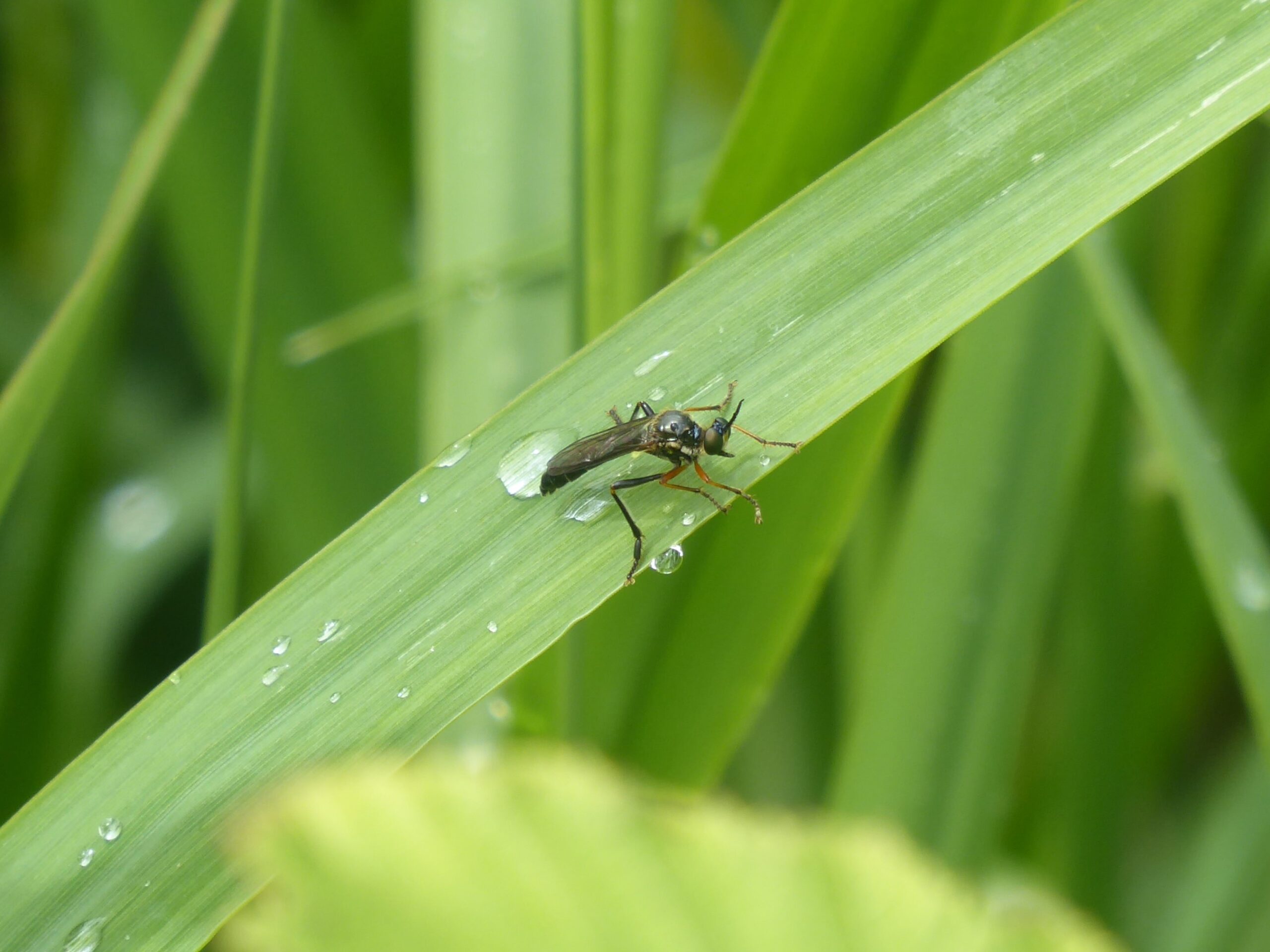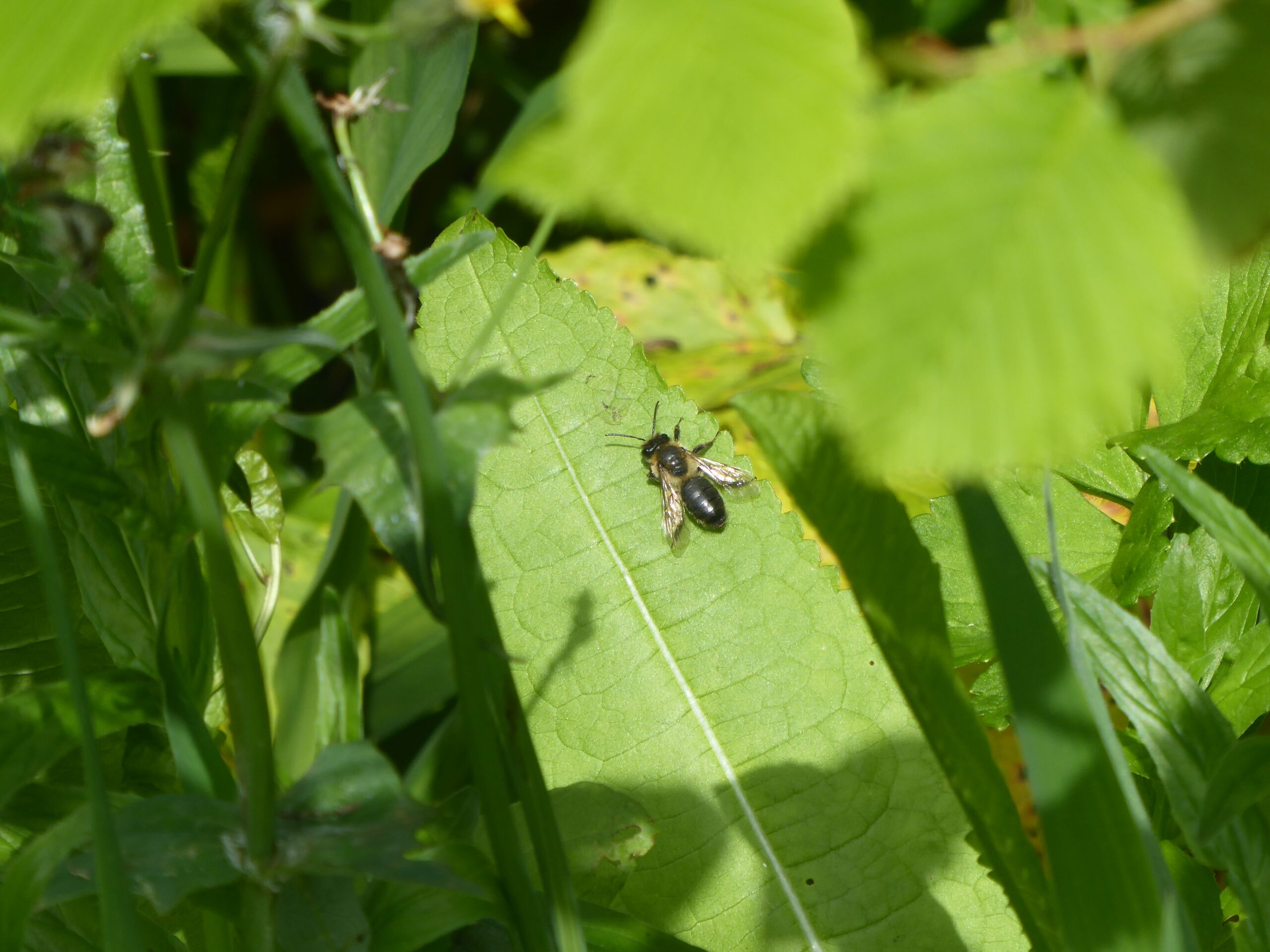This is a caterpillar that I have seen before. In August last year, I spotted it in Little Venice. This time it was in the fernery, so not very far away. It looked a bit different, larger and slightly paler, but the defining feature is the distinctive ‘eye’ patterning behind the head of the caterpillar. The idea is that to defend itself and scare off predators, it retracts its head to puff out its body and make eye-spots stand out even more. The illusion is of a big snake-like head.
Despite these scare-tactics, and contrary to popular belief, the elephant hawk-moth is not poisonous.
The caterpillar, which is one of the biggest in the British Isles, grows phenominally quickly from around 15mm at 9 days old, to double that after 12-14 days when they turn from green to dark and reaching 80-85mm at 30 days old when they are fully-grown. That’s an expansion of over 500% in just over 20 days!! Then they pupate and overwinter in the leaf litter below their host plant, which is usually a bedstraw or willowherb.
Generally, there are still lot of butterflies in the garden and watermeadow, mostly whites, but also some of the others including red admirals.
